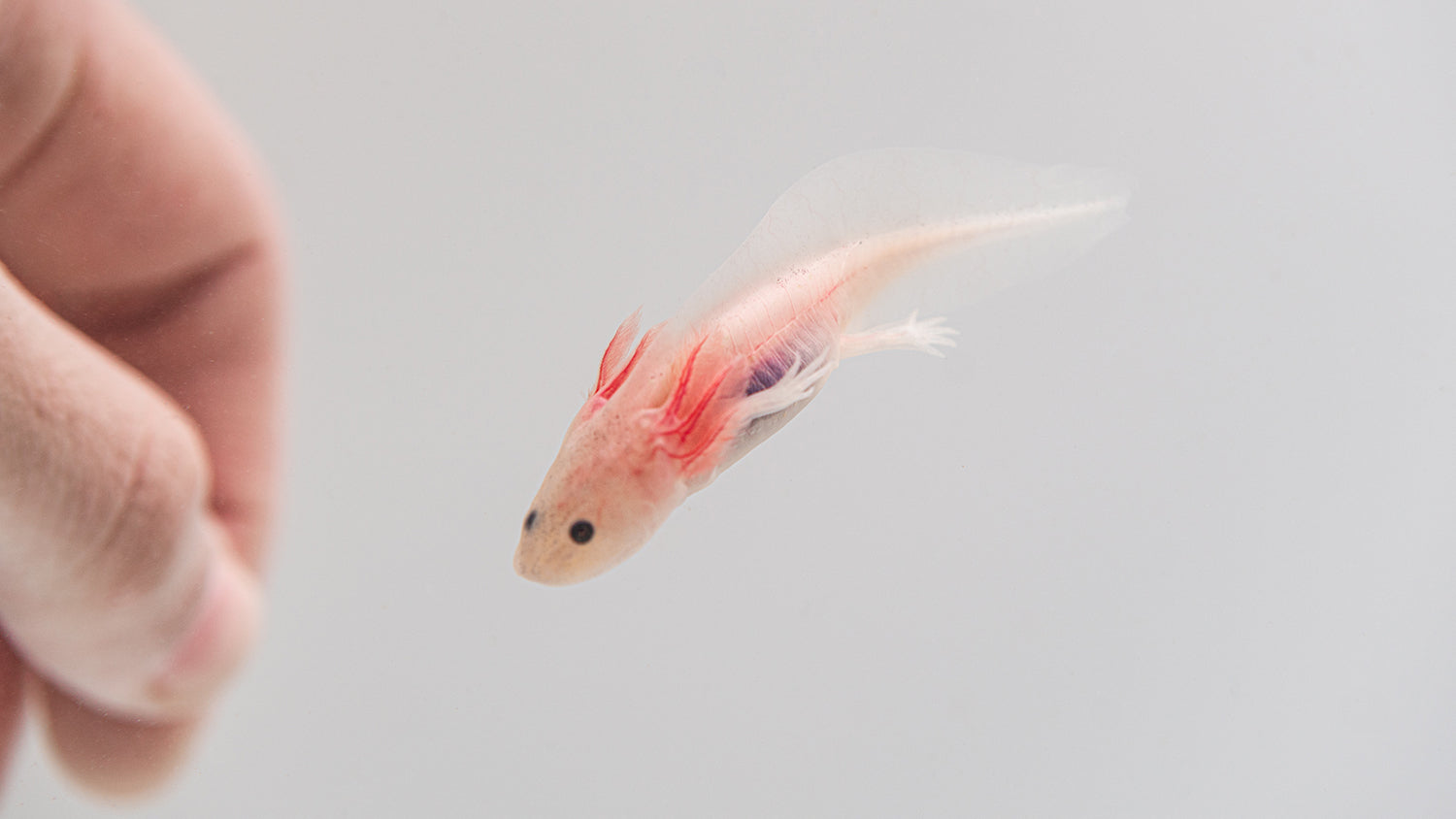Introduction
With how many beautiful morphs of axolotls that exist out there in the world, it makes sense that people want to collect them all like pokemon. But not so fast, our exuberant axolotl enthusiasts! While it is absolutely possible to keep more than one axolotl together, there are some serious considerations to think about before doing so.

Axolotls Can Accidentally Injure One Another
In the wild, axolotls are ambush predators. This means they don’t actively hunt food, but passively wait for unsuspecting prey to pass by their head and will quickly vacuum it into their mouths and swallow it whole. Axolotls also have fairly poor eyesight. In fact, they primarily rely on their lateral line system and their sense of smell to identify prey. In captivity, this can translate to axolotls accidentally mistaking other axolotls, plants, rocks, or even a human finger for food!
Generally, hatchlings and juvenile axolotls will grow out of this habit, but even an underfed adult axolotl is at risk of injuring a tank mate if it's hungry enough. To minimize the risk of axolotls trying to cannibalize each other, they have to be very well fed, have plenty of decorations in their tank to allow them to break line of sight of one another, and they need to be the same size because a larger axolotl will be likely to try and eat the smaller. However, this will not completely eliminate the risk of axolotls injuring one another, only reduce it.
It is also best to have a plan in place if your axolotls do end up injuring each other. Having a hospital tank on hand to temporarily house an injured axolotl while it heals is ideal, but you can also use a breeder box to temporarily keep axolotls separated while one is regrowing a limb. If this does occur, it’s important to keep nitrates in the tank as low as possible to reduce the risk of infection.
Axolotls of Opposite Sex Can and Will Breed
If you keep a mature male and a mature female axolotl together, it’s not a matter of if, but a matter of when they breed. This comes with a whole host of issues and concerns both practically and ethically. What further complicates the issue, is that axolotls cannot be sexed until they are almost fully mature. Male axolotls can start to show differentiating sexual characteristics as early as 6 - 8 months old, but can often take up to 18 months to be confirmed male. Females cannot be confirmed until about 18 months of age. This poses a difficulty for people who want to purchase juvenile axolotls and watch them grow. If you get multiple juvenile axolotls, you will need to set up a secondary tank to prepare for the possibility of the axolotls ending up being opposite sex. The reason for this is threefold.
First, male axolotls can breed female axolotls to death. Female axolotls can only safely lay eggs about every 6 months. If a female axolotl is forced to breed more frequently than this it can severely weaken and potentially kill her. The only way to avoid this outcome is to permanently separate the axolotls. A secondary tank is recommended for this as many tank dividers can still allow spermatophores to pass through netting, gaps, or holes meant for water flow.
Second, axolotls can potentially lay up to a thousand eggs. Raising baby axolotls is a full time commitment. It can also be quite costly. If you do not have the time, space, knowledge, and resources to successfully rear young axolotls, it can lead to many hatchling axolotls dying.
Third, axolotls as a species are very inbred. Reputable breeders take great pains to track their axolotl bloodlines and genetics to prevent the risks associated with inbreeding. But, if you have a male and female axolotl purchased around the same time, from the same breeder or pet shop, it is extremely likely that your axolotls are related, and if they accidentally breed, then those babies are almost guaranteed to inherit deadly recessive traits that affect their development and life expectancy. It is considered unethical to rear inbred axolotls. To learn more about what you should do if your axolotls accidentally breed, read our article, What To Do If Your Axolotls Accidentally Breed.
To reiterate, the only way to avoid these outcomes is to either have a secondary tank set up in case you need to separate the axolotls, or only purchase adult axolotls that have been sexed, and only house same sex axolotls together. There is no risk in having multiple males or multiple females together.
Conclusion
We hope this information helps you to make an informed decision for yourself and your current or future axolotls! Many axolotl enthusiasts keep multiple axolotls together to great success, but the best way to ensure this success is to know what to expect and how to avoid the most common problems associated with keeping more than one axolotl in the same aquarium. If you’d like to know more about caring for axolotls, we recommend reading our Bulletproof Axolotl Care Guide and our guide on axolotl sickness and health.





Leave a comment
This site is protected by hCaptcha and the hCaptcha Privacy Policy and Terms of Service apply.